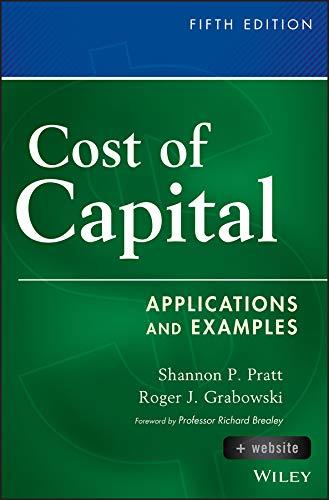Question
Case 20-7 Real Value Corporation Real Value Corporation (the Company), is a public company (and an SEC registrant) that creates augmented reality technology. The Companys
Case 20-7 Real Value Corporation Real Value Corporation (the Company), is a public company (and an SEC registrant) that creates augmented reality technology. The Companys primary source of revenue is currently from universities that use the Companys products to superimpose computer generated images in the classroom to enhance learning. In addition to its ordinary business activities, the Company invests in equity securities (described below) to generate investment income, which is the case for all investments made by the Company as described herein. The Companys fiscal year-end is December 31. The Company files quarterly and annual financial statements with the SEC. The Company purchases equity securities in the form of Series A preferred stock of Company X (a private company) on February 1, 2019. The Company concludes that the equity security does not have a readily determinable fair value and that it does not qualify for the practical expedient to estimate fair value in accordance with ASC 820-10-35-59. In its Q1 2019 financial statements, the Company accounts for this investment in accordance with ASC 321, as amended by ASU 2018-03 and ASU 2019-04; the Company elects the measurement alternative in ASC 321-10-35-2 on the date of purchase, as it does for all its investments described herein.
The terms for the Company X Series A preferred stock are as follows: Has substantive liquidation preference over any other class of shares Company X has outstanding (these Series A shares would retain its substantive liquidation preference over any class of shares Company X may issue at any point in the future). Has no voting rights. Can elect two members of the board of directors. Receives dividends that are cumulative and participatory. Can be converted to common stock at any time at the holders option.
Second Quarter Events On April 1, 2019, the Company purchases additional shares of Series A preferred stock of Company X as a part of an offering that Company X made to multiple investors; the price paid is greater than what the Company paid in its purchase on February 1, 2019. On May 1, 2019, the Company purchases equity securities in the form of Series A preferred stock of Company Y (a private company). This Company Y Series A preferred stock provides for similar rights and obligations provided for by the Company X Series A preferred stock, but the price paid for the Company Y Series A preferred stock is greater than what the Company paid when it purchased Company X Series A preferred stock on April 1, 2019.
On June 1, 2019, the Company purchases shares of Series B preferred stock of Company X as a part of an offering that Company X made to multiple investors. The price paid is less than what the Company paid when it purchased Series A preferred stock of Company X on February 1, 2019. The terms for the Company X Series B preferred stock are identical to the Company X Series A preferred stock except for the following: Series A has a substantive liquidation preference over Series B. Can only elect one member of the board of directors. Receives dividends that are noncumulative. Series A has dividend preference over Series B (i.e., Series A will receive dividends, if declared, before Series B). Shares cannot be converted to common stock.
Fourth Quarter Events On November 1, 2019, Company Y issues additional shares of Series A preferred stock only to Company Ys original investor (no additional shares were offered the Company given that the Company was not the original investor).
Required: 1. For purposes of the Q1 2019 financial statements, what criteria must the investment in Series A preferred stock of Company X meet to be eligible for the measurement alternative in ASC 321-10-35-2?
2. Given its election of the measurement alternative in ASC 321-10-35-2, how is the Company required to measure the equity security as of March 31, 2019?
3. For purposes of the Q2 2019 financial statements, how would the additional shares of Series A preferred stock purchased of Company X on April 1, 2019, affect the measurement of the Series A preferred stock purchased of Company X on February 1, 2019?
4. For purposes of the Q2 2019 financial statements, how would: a. The observable transactions related to the shares of Series A preferred stock purchased of Company Y on May 1, 2019, affect the measurement of the Series A preferred stock purchased of Company X? b. The shares of Series B preferred stock purchased of Company X on June 1, 2019, affect the measurement of the Series A preferred stock purchased of Company X? Assume that evaluating the terms of Series A and Series B preferred stock, to consider the significance of the impact on the fair value of the Series A preferred stock, would require very complex valuation work.
5. For purposes of the 2019 annual financial statements, how would the additional shares of Series A preferred stock issued from Company Y to Company Ys original investor on November 1, 2019, affect the measurement of the Series A preferred stock purchased of Company Y on May 1,
Step by Step Solution
There are 3 Steps involved in it
Step: 1

Get Instant Access to Expert-Tailored Solutions
See step-by-step solutions with expert insights and AI powered tools for academic success
Step: 2

Step: 3

Ace Your Homework with AI
Get the answers you need in no time with our AI-driven, step-by-step assistance
Get Started


